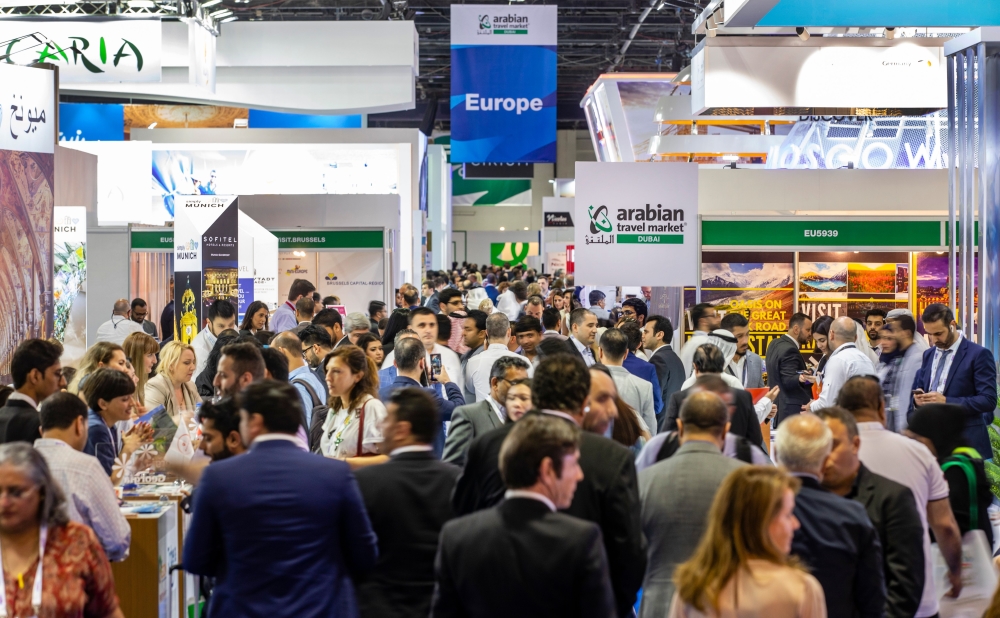- UAE will witness highest growth with total Nordic tourism estimated to reach US$718 million by 2024, followed by Saudi Arabia and Bahrain
- 383,800 Nordic citizens will travel to the GCC in 2024, an increase of 23% when compared with figures from 2018
Nordic tourists travelling to the GCC from Denmark, Norway, Sweden, Finland and Iceland, are expected to generate an estimated US$810 million in travel and tourism revenue by 2024, according to data published ahead of Arabian Travel Market 2020, which takes place at Dubai World Trade Centre from 19-22 April 2020.
The latest Colliers International research, commissioned by Reed Travel Exhibitions, the organiser of Arabian Travel Market, predicts the UAE will witness the highest growth, with total tourism spend by Nordic visitors projected to reach US$718 million by 2024, an increase of 36% when compared with figures from 2018 and tourism spend per trip to reach US$2,088.
Building on this, Saudi Arabia is expected to witness the second largest increase followed by Bahrain, with total Nordic tourism spend estimated to reach US$86,670,000 and US$53,000,000 respectively, by 2024.
Danielle Curtis, Exhibition Director ME, Arabian Travel Market, said: “The Nordic countries’ outbound tourism market has experienced incremental growth over the last five years, with 50.5 million overseas visits made by residents during 2018 alone.
“And, with Nordic citizens enjoying one of the highest average incomes in the world and being amongst the world’s highest spenders while travelling abroad, the GCC is looking to capitalise on their spending power over the next five years.
“Adding to this, ATM is witnessing this growth first-hand with the number of delegates, exhibitors and attendees interested in doing business with these countries increasing by 35% between 2018 and 2019.”
Looking at Nordic outbound tourism figures, arrivals from Denmark, Norway, Sweden, Finland and Iceland to the GCC will increase 23% over the period 2018 to 2024, driven by an increasing number of new and direct flight routes, relaxed visa requirements and the vast number of unique travel experiences that the region has to offer.
Abu Dhabi and Saudi Arabia have been popular destinations for Norwegian business tourists for many years due to their joint interests in the oil industry, while for Swedish, Icelandic, Danish and Finnish tourists, the UAE and wider GCC region offer year-round sunshine allowing them to escape the constant mid-winter temperatures of below freezing.
According to the Colliers data, approximately 383,800 Nordic citizens will travel to the GCC in 2024, with Swedish tourists leading the number of arrivals, totaling 191,900. Visitors from Denmark will follow with 76,700 arrivals, closely followed by Norway, Finland and Iceland with 62,800, 47,200 and 5,200 arrivals, respectively.
Curtis said: “The UAE will continue to be the preferred GCC destination for Nordic tourists, welcoming a projected 342,200 tourists by 2024. Saudi Arabia and Oman will follow with 17,300 and 16,500 respectively, while Bahrain well welcome 7,000 and Kuwait 800.
“Driving this demand in the UAE, Emirates currently operates direct flights to Norway, Denmark and Sweden and last year introduced a direct flight to Iceland, following the closure of low-cost Icelandic carrier WOW air. Meanwhile, Norwegian Air operates direct flights between Oslo and Dubai five times a week and flydubai has direct flights between Dubai and Helsinki in Finland.”
ATM, considered by industry professionals as a barometer for the Middle East and North Africa tourism sector, welcomed almost 40,000 people to its 2019 event with representation from 150 countries. With over 100 exhibitors making their debut, ATM 2019 showcased the largest ever exhibition from Asia.
Adopting Events for Tourism Growth as the official show theme, ATM 2020 will build on the success of this year’s edition with a host of seminar sessions discussing the impact events have on tourism growth in the region while inspiring the travel and hospitality industry about the next generation of events.
